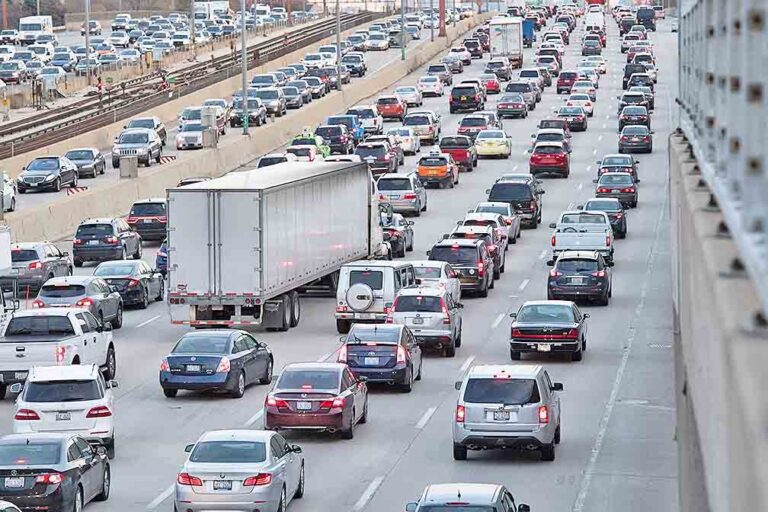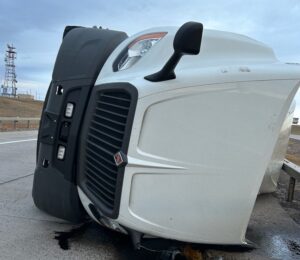The US Department of Transportation is seeking information from the trucking and other transportation industries, as well as the general public, on what it calls the “current challenges faced within the freight and logistics sector.”
The survey is part of fulfilling President Joe Biden’s Feb. 24 executive order focusing on “the need for resilient, diverse, and secure supply chains to ensure U.S. economic prosperity and national security,” DOT officials said. Answers from the survey will be used to help compile a report to be given to the president.
Topics include the following:
The identification of major infrastructure or operational bottlenecks and chokepoints across all aspects of the freight and logistics supply chain — including shipping/receiving, intermodal transfer, rail/water/truck transportation, warehousing, etc .— that slow or impede efficient cargo movement within the freight and logistics sector, and the most effective investments and management practice improvements that could be made to alleviate those bottlenecks.
Current and potential future shortages and/or distribution limitations of essential cargo-handling equipment, such as chassis and shipping containers, and how these challenges can be or are likely to be addressed by the freight and logistics industry over both the medium and longer term.
Warehouse capacity and availability, and any challenges faced in operating and siting/constructing those facilities, as well as challenges faced by third-party logistics service providers and other stakeholders in the logistic system. Major risks to resilience within the freight and logistics sector (including defense, intelligence, cyber, homeland security, health, climate, environmental, natural, market, economic, geopolitical, human-rights, or labor-management risks). What factors help to mitigate, or conversely exacerbate, these risks?
The effects of climate change on transportation and logistics infrastructure and its implications for supply chain resiliency.
Technology issues, including information systems, cybersecurity risks, and interoperability, that affect the safe, efficient, and reliable movement of goods. Would greater standardization of those technologies help address those challenges?
Key opportunities and challenges with respect to the existing and future workforce to ensure a well-functioning freight and logistics supply chain and achieve the President’s goal of increasing good-paying jobs with the choice of a union. Are there additional workforce or skill set opportunities and needs currently, or expected in the future?
Current barriers (including statutory, regulatory, technological, institutional, labor and workforce, management, existing business models/practices issues) that inhibit supply chain performance. For any barriers identified, please address the actors involved and potential outcomes should those barriers be removed.
Critical assets that the sector relies upon and their expected future availability. Would increasing domestic production of these assets be desirable or feasible as a means of ensuring greater supply chain resiliency (chassis, containers, etc.)?
Technological practices, including data sharing, that are being implemented at various levels across the supply chain sector. What are the upsides, challenges, and drawbacks of further adoption?
Actions that DOT or other agencies in the U.S. Government (USG) could take under existing authorities or in partnership with States, local governments, the private sector, or labor to address current and evolving challenges within the freight and logistics sector.
Other policy recommendations or suggested executive, legislative, or regulatory changes to ensure a resilient supply chain that DOT/USG should consider, including means to collaborate more effectively across government agencies and suggestions based on state and international models.
Recommended actions by non-Federal entities, including State and local governments, private firms, labor, and other participants in the freight and logistics sector that could be encouraged by DOT/USG.
Click here to take the survey, which ends on Oct. 18.
The Trucker News Staff produces engaging content for not only TheTrucker.com, but also The Trucker Newspaper, which has been serving the trucking industry for more than 30 years. With a focus on drivers, the Trucker News Staff aims to provide relevant, objective content pertaining to the trucking segment of the transportation industry. The Trucker News Staff is based in Little Rock, Arkansas.
















The job of a trucker is hard enough without the added frustration of mandates. Get rid of the vaccine mandate or you will have a huge supply problem. You cannot force people to take a dangerous, experimental, untested, and unneeded drug. Drop the mandates for suppliers, truckers, and warehouse workers or you will be too shorthanded to move goods anywhere.
ELD’S, wait time at shippers and receivers, bad roads, lumpers ( that’s a money laundering scam, we shouldn’t have to deal with.) No parking ( closed rest areas and parking areas) under educated power hungry D.O.T officers, a over regulations, the biggest one is all the Is foreign drivers that do not follow our rules is rules or speak our language but Yet they’re given free passes on everything giving us all bad names somalians are by far the worst.
Over night parking is a major problem for the trucking industry . Parking must supply restrooms . All truck should not be set lower than 68 . Enforcement on slow truck running in left lane for long periods of time . Set a 6 week training Mandate with a Federal certified training program .